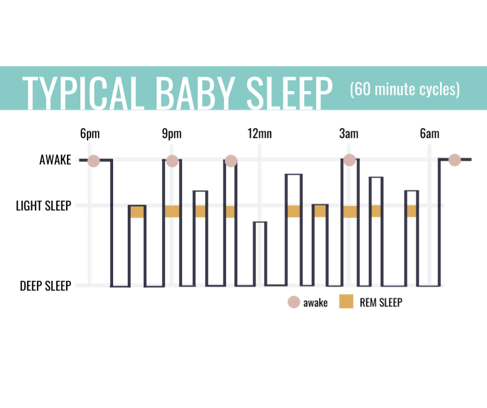Understanding Baby Sleep Patterns: Establishing Healthy Sleep Habits

Welcome, weary but dedicated parents! If you’re feeling lost in the haze of baby sleep patterns, fear not, for I’m here to shed light on the secrets of your little one’s slumber. In this guide, I’ll unravel the mysteries of baby sleep cycles, the importance of restorative rest, and the gradual development of their internal sleep clock. So, put on your detective hats (or just a pair of comfortable pajamas), and let’s embark on this enlightening journey together!
Understanding Baby Sleep Patterns
In order to understand how to help our baby get a good amount of sleep, we need to understand what a baby’s sleep pattern is like and how it differs from adults. Unlike adults, babies have not developed a mature circadian rhythm. Their sleep cycles are spread out throughout the day and night, and they have a different sleep pattern than adults do.
Baby Sleep Cycles
A baby’s sleep cycle differs from an adult’s. While adults have sleep cycles that last closer to 90 minutes, a baby’s sleep cycle is closer to 40 minutes, depending on the baby. This means that just as you are entering your deep sleep cycle, your baby might be waking you up. This is why overnight parenting can feel so exhausting and overwhelming.
And while adults spend more time in quiet sleep, babies spend most of their sleep time in active sleep.


Active Sleep vs. Quiet Sleep
While adults spend more time in quiet sleep, babies spend most of their sleep time in active sleep. Typically, a baby will start their sleep cycle in active sleep, or REM sleep. This is when you might see your baby startle, twitch their limbs, etc. They can be easily woken at this stage of sleep, and they spend on average 20 minutes in this REM cycle. This REM stage, or active sleep stage, is important for brain growth and development. Babies then typically switch over to NREM sleep stage, or the quiet sleep stage, where their body relaxes, and heart rate slows. This is considered the restorative stage of the sleep cycle.
Circadian Rhythm and Melatonin Production
Besides the length of sleep cycles and the amount of time spent in deep sleep, babies also differ from their parents in their circadian rhythms and melatonin production. A baby’s circadian rhythm is still developing in the early months and doesn’t fully start to develop until after four months. Around the four-month mark, you may notice that your baby is starting to develop a more consistent sleep pattern. This is thanks in part to their circadian rhythm taking shape, but also because they’re realizing that nighttime is for sleeping, not partying.
Melatonin, the hormone that helps regulate sleep, also plays a crucial role in your baby’s circadian rhythm. Babies start to produce their own melatonin around four months as well. As they grow, their body produces more melatonin in response to darkness. It’s like they have their own built-in sleep signal.
Tips for Establishing a Healthy Sleep Foundation
Now that you know how your baby’s sleep differs from yours, and why they sleep and wake the way they do, we can use gentle strategies to establish a healthy sleep foundation for your baby! Here are some tips that I will often share with my sleep clients:
- Establish a bedtime routine: A consistent bedtime routine can help signal to your baby that it’s time for sleep. A soothing bath, a lullaby, and some cuddles can all help prepare your little one for bed.
- Create a sleep-friendly environment: Make sure your baby’s sleep environment is quiet, dark, and cool. This can help them fall asleep and stay asleep for longer stretches.
- Encourage daytime naps: While it may be tempting to keep your baby awake during the day to tire them out for the night, this can actually backfire. Encouraging regular daytime naps can help your baby establish a healthy sleep routine.
- Limit stimulation at night: During nighttime feedings, keep the lights dim and avoid playing with your baby. This can help signal to them that it’s time to go back to sleep.
- Expose your baby to natural daylight during the day. By letting your baby get some sunshine in their day, it helps their body figure out what time is daytime and what time is nighttime.
- Be patient: Remember, establishing a healthy sleep routine takes time. Be patient with your little one and know that they will eventually develop a circadian rhythm.
